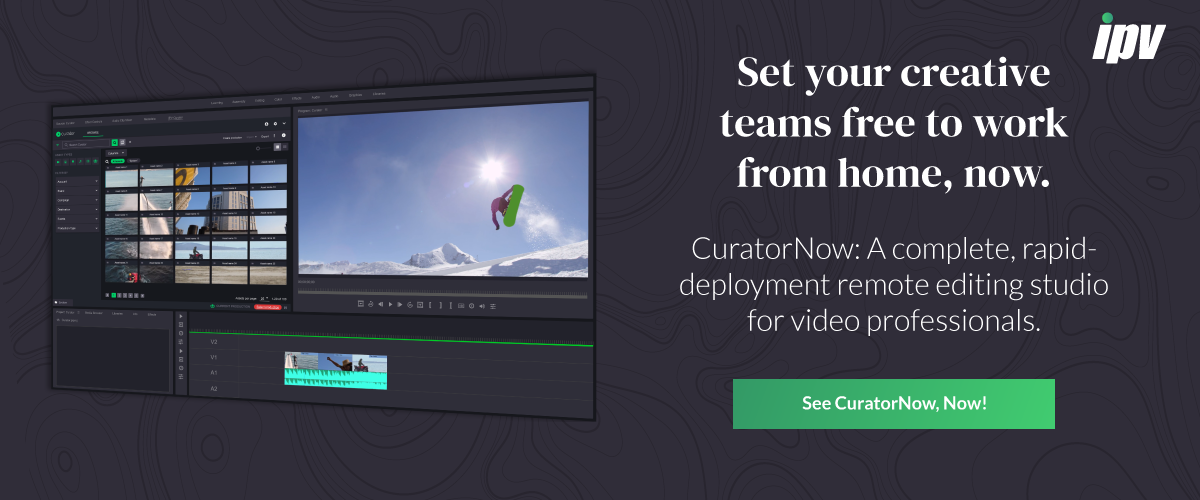
Educational institutions are having to find ways to deliver far more flexible learning options as a response to social distancing. A huge part of achieving that is using video. Like all edtech innovations, teaching through video is a controversial topic. But with colleges questioning their ability to reopen in the fall (Cambridge has already announced that all lectures will be online-only until 2021), video is critical to continuing classes.
Video also plays a key role in student engagement and recruitment, as well as alumni programs, internships and more. Global pandemic or not, this generation of students are beginning to expect video content as part of their education and getting a head start now, out of necessity, will guarantee long-term benefits.
However, ramping up educational video production is easier said than done. Educators are educators, not video producers on the side. They will need to focus on the ways to use video to improve educational outcomes, not mastering the ‘jump cut’.
Here, we are going to look at three ways educational institutions can streamline and improve video production -- helping teachers focus on teaching while still connecting with students during the health crisis and beyond.
1. Embrace flexibility and remote workflows
A huge challenge of adjusting to social distancing is discovering ways to work, teach and collaborate remotely. But there are definite positives to mastering this for the current climate as well as the future.
For example, opportunities will be created for those who require flexible and remote workflows, such as the disabled or those working at a distance from the school. This, of course, means that educational institutions can benefit from diversity and the possibility of working with more experts in specific fields.
You’ll also be able to hire freelancers for single high-production video projects or part-time editors, animators and more, as well as recruit and retain full-time staff. Being able to collaborate with such people remotely is a huge bonus and one you don’t want to miss out on.
The problem is technical execution. If you are to collaborate remotely on video projects, you need the technical foundation necessary to do so.
How you can do this:
Most editing software (e.g., Adobe Premiere Pro or Avid Media Composer) is able to produce size reduced proxies that are small enough to be edited in the cloud and then ‘conformed’ back to high-resolution masters. But true collaboration requires more than this. You need:
- Cloud-based access to archive and production material
- Multi-user access to proxies
- Permission settings to allow secure access and collaboration
This set of outcomes requires the use of Video Content Management (VCM) or Media Asset Management (MAM) software.
But what is VCM and MAM?
- VCM = a tech tool that focuses on cataloging finished video assets. It provides low-complexity archive management for organizations with limited video content management needs.
- MAM = a platform that accommodates both video and a wider range of media assets. It generally has the ability to manage larger and more advanced archive environments and production workflows, which is why we’ll be focusing on MAM software.
Cloud-based MAM software is crucial for the big shift towards video content that education is facing. Instead of editors working alone and being forced to share complicated file versions with a team, editors can all access the same up-to-date edition. This takes collaboration between video experts and your education staff to a whole new level with less administration. It also means that you can draw on educator expertise during production, rather than after it.
These cloud-based platforms also offer solutions to your fears around security concerns regarding the cloud. In fact, a high-quality MAM system will actually improve your security by removing human error and allowing you to set permission access to the files you want to share remotely. You’re able to collaborate from a distance, as well as standardizing who has access to what.
What this lets you achieve:
- Accommodation of current social distancing
- Hiring freelancers and specialists when needed
- Employing permanent and part-time staff who expect flexible workflows
- Greater collaboration between educators, production staff and marketing teams, who can work together to produce the right content
2. Prioritize archive transparency and re-use
Video assets are expensive and time consuming to make. Ideally, you want the ability to repurpose material multiple times wherever it’s applicable — speeding up production and reducing costs. The fact that the current health situation makes filming new material harder only elevates the value of repurposing.
How you can do this:
Archive transparency and access are critical. The same MAM tools that allow for remote collaboration should solve your access problem. However, this is a critical feature you need to look for during the procurement process. But just as important as access is transparency and searchability — and this comes down to metadata.
But what is metadata?
- Metadata is data that gives you information about other data.
- Basic metadata is technical information about a file — length, codec, format, date. However, it can also be descriptive information about what the clip contains — name, style, shots, subject.
- It allows you to understand and select files without viewing them.
The more descriptive and detailed your metadata, the better. Descriptive metadata can be entered manually. However, that process is prone to issues with human error and requires a lot of time. A high-quality MAM will automate the creation of basic metadata, and even help create improved advanced metadata.
Object recognition and controlled inputs
A MAM will help with detailed metadata creation in two ways. The more basic solution is to create standardized vocabulary inputs for manual processing. However, more advanced MAM has begun experimenting with object detection and speech recognition algorithms to automatically generate hyper-descriptive metadata.
1 in 10 hours spent at work by editors and other creative professionals is wasted looking for material. The promise of “Ctrl + F” type searchability of video archives can tremendously accelerate production times.
What this lets you achieve:
- Finding assets faster
- Re-using high-value content regularly
- Acceleration of production times
- Reduction of costs and time associated with video production
- Speeding up of accurate metadata creation
3. Create an end-to-end delivery system
A key way to strengthen your production of educational videos lies in your use of one centralized production hub, rather than multiple disconnected ones. Choosing and implementing a system that addresses all of your production needs, such as collaboration, editing, and output is a sure way to scale up your video production.
Efficiency and collaboration are of the utmost importance. However, high-speed internet outputs are also a crucial part of being able to produce and deliver that content. An end-to-end delivery system will accommodate this requirement.
How you can do this:
Again, a MAM platform provides the most straightforward way of delivering end-to-end functionality. A MAM platform allows you to unite all of your teams, gives you an opportunity to collaborate and produce content efficiently, as well as offering a streamlined output system. You’ll have centralized access, end-to-end simplicity and all of the benefits that come from it. On top of this, a MAM software will eradicate the complications of having to implement and reconcile multiple systems remotely.
What this lets you achieve:
- Improved efficiency
- Consolidation of ‘sources-of-truth’
- Improved collaboration
- An output that goes straight to OTT uploads
High-performance educational video production
The right technological tools are essential to match the demands of video. Ultimately, you need streamlined production and simple collaboration. The current situation demands remote workflows, but the ability to collaborate remotely will be vital to bringing educators and video production specialists together in the future.
We have put together an eBook specifically for educators who want to better understand media asset management (and video content management), that you can find here. The future of education demands video. Use the challenges of the current situation to lay the technical, educational and creative foundations required to match the opportunities to tomorrow.



Speak Your Mind